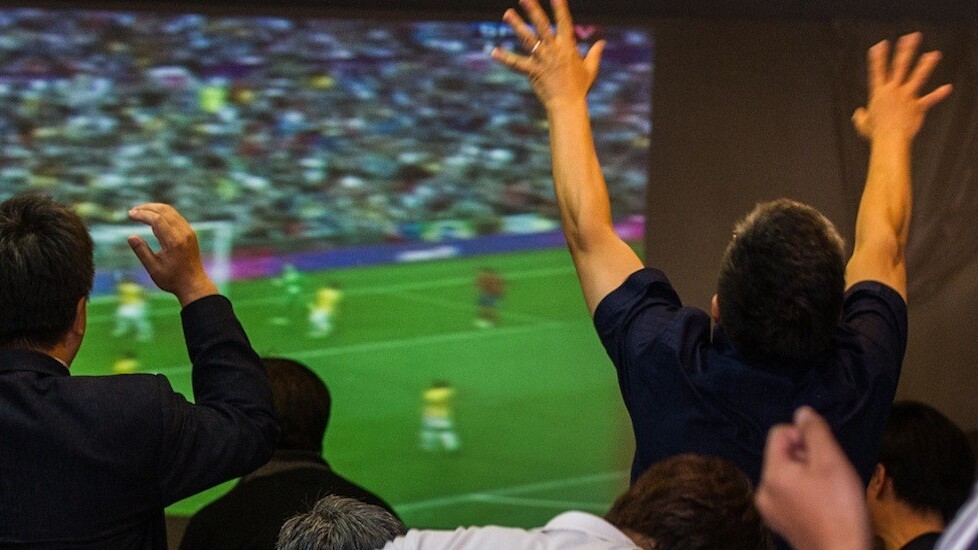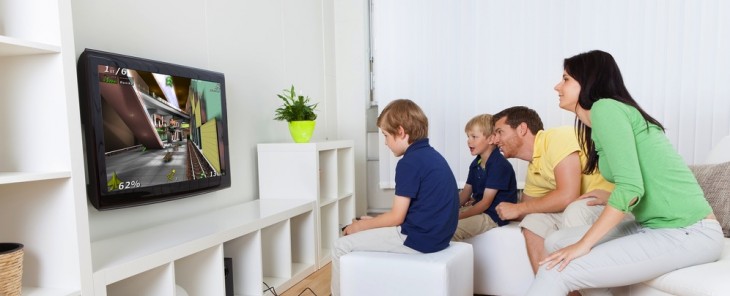
Chinese Internet companies are flocking into the smart TV space as they aim to conquer the living room. Recently, a flurry of firms have rolled out smart TVs in the country, hoping to draw consumers with an impressive large screen that is typically the centerpiece of any household, which includes a range of Internet-based entertainment services.
Many new smart TVs have arrived in China in recent months. In early September, popular Chinese smartphone manufacturer Xiaomi announced its move beyond handsets as it launched a 47-inch 3D smart TV which is retailing for CNY2,999 ($490). The TV went on sale Tuesday, and 3,000 sets were sold out in under two minutes.
In July, Chinese e-commerce giant Alibaba announced that it had developed a smart TV operating system and was working with a number of partners, including Cisco and Chinese manufacturers, to develop smart TVs, set-top boxes and services to run inside them. The culmination of those efforts resulted in a total of three smart TVs unveiled in September, which will go on sale officially some time this month, manufactured in collaboration with Skyworth.
A little over a month after Alibaba announced its smart TV OS, fierce rival Baidu also jumped into the space as it partnered with electronics maker TCL Multimedia to sell smart TVs, which include content and branding from its video platform iQiyi.
A 48-inch model is available from online retailer JD.com for CNY4,567 ($746), while a second as-yet-unspecified version will go on sale for CNY2,999 ($490) in November.
Smart TVs are growing in China
Smart TVs are “growing considerably” in China, Neo Zheng, a senior market analyst in charge of client system research at IDC China, told TNW in an interview. He notes:
Smart TV shipments grew by over 100 percent in 2012 and will increase by over 50 percent in 2013 respectively.
Chinese electronics manufacturer Hisense, which makes TVs, says that last year both Android-based and Linux-based smart TVs accounted for about 40 percent of the whole TV market sales volume.
The company expects the share to grow to about 50 percent this year, while for Hisense itself, Chief Technology Officer and Executive Vice President Charlie Wang tells TNW that smart TVs will make up about 60 percent of its TV sales this year.
TVs are superior for videos and games
Why are smart TVs gaining traction among Chinese consumers even with the presence of desktop computers and smartphones? Ultimately a TV set is superior for a few things, in particular video and games.
IDC’s Zheng says: “Customers are abandoning traditional TVs for video-on-demand and easy-to-manipulate mobile devices, and smart TVs could satisfy the above needs and drag customers back to (the) living room.”
Aneesh Rajaram, the senior vice-president for TV and devices at Opera Software, tells TNW in an interview that smart TVs enable viewers to use the biggest screen in the home for their favorite content, including video and games. “And this online content is actually well suited to bigger screens,” he notes.
The Internet has changed the way that people consume video content. The days of watching linear TV programs are gone — now, the consumers want to be able to choose when and where to consume the content they want to watch on their TVs.
Opera Software has exported its browser technology to many smart TV operating systems in China. TCL, Changhong, Konka and Hisense are now working with Opera to bring online content to their connected TV devices. One of the solutions Opera has come up with is the Opera TV Store, a HTML5-based storefront of Web apps optimized for TV.
Rajaram notes that more than half of the TV models in Chinese retail stores are now smart TVs:
If you go to a retail store in China, you will find that most TV retailers use smart TV as one of the unique selling points to attract their consumers. OEMs are also launching more models with connected TV functionality to attract consumers.
TVs have become another Internet tool
IDC’s Zheng cites Internet access, the widespread availability of apps and the “living room culture” — basically how families in China tend to spend their free time nowadays — as the reasons for attracting not only traditional TV makers but also Internet firms including Xiaomi, iQiyi and Alibaba.
Hisense’s Wang concurs, saying that the Internet has transformed TV sets — allowing TV to enter cyberspace and having more potential for applications. Applying software to traditional TVs has opened the door to third-party application developers to do as they have done for smartphones — essentially giving them more avenues to capture a larger audience.
“Customers, especially youngsters, really do not want to be constrained by space and time. They want freedom to watch TV anytime and anywhere,” says Wang.
The rise of on-demand video streaming, and the interaction of TV with smartphones are factors which have led to smart TVs being so popular, Wang explains. This means that smartphones will suffice when they are on the move, while back at home, the fact that they can have the same functions on their smartphones up on the big screen makes them more inclined to switch on the TV.
“People now play with (their) TVs rather than just watch them,” Wang says.
Opera’s Rajaram notes that “with the increasing adoption and technology enhancements of HTML5, developers are able to make content available across different platforms, from desktop and mobile phones to TVs and different operating systems easily.”
“Smart TV is all about consuming content on the Web,” he says.
Overcoming challenges in the smart TV market
Driving the adoption of smart TVs and therefore capturing a latent audience is the key challenge of the market going ahead.
Opera’s Rajaram says that the company has found that video and music are the most popular kinds of smart TV content, but “most content publishers do not have enough resources to repurpose their online content available for TVs.” He notes:
Lowering the barriers of content creation for TV is crucial to drive more smart TV adoption… More online content built specifically for TV will help drive smart TV adoption.
In July, Opera Software introduced Opera TV Snap, which gives content publishers the ability to transform their online video into apps for smart TVs. Rajaram notes that more than 100 TV apps have been submitted by Dailymotion content partners using Opera TV Snap within the first two months.
Other than that, manufacturers also need to ensure that the hardware performance of smart TVs can match up to that of desktop computers and smartphones.
Rajaram says: “For device OEMs, it is important to adopt the rendering engine that is able to bring superior hardware acceleration and JavaScript performance to match the demands of popular Web services.”
This is no wonder why Internet companies in China are jumping onto the bandwagon — given their work with the Internet, it is perhaps easier for them to channel these capabilities into a different product. On the other hand, traditional manufacturers typically tap on third-party providers such as Opera to help them target the market.
IDC’s Zheng also notes that smart TVs need to overcome the disadvantages of the change in behavior brought about by mobile devices, “especially younger generations who adopt tablets and smartphones to watch video in-house.”
He also says that set-top boxes, ironically developed by these Internet companies as well, such as the Xiaomi Box and Alibaba’s Wasu Rainbow set-top box, will turn out to be “really big competitors of smart TVs.”
People can just buy a smart set-top box to transform its traditional TV into a smart one, with almost similar functions and experience with much lower costs. Those customers consider TVs to be durable electronics, and only have to upgrade (a) smart set-top box in one or two years to catch up with the latest experience.
Companies will probably have to find a way to differentiate their set-top boxes from smart TVs — and beef up their smart TV experiences by so much that consumers actually want to purchase the TVs instead of just a set-top box. So far, it seems like repurposing smart TVs for the best video-streaming and Internet experience has been working in the companies’ favor.
The future of smart TVs in China
Hisense’s Wang is confident that the demand for smart TVs will keep rising — and expects that in about two to three years, 90 percent of the TVs in China’s market will be smart TVs.
IDC’s Zheng notes that smart TVs will continue climbing in China, as traditional TV vendors are dedicated to promote smart TVs in order to capture possible opportunities that can be brought about by introducing value-added services, while Internet firms are keen to stay in this space as they can better provide content and operating systems, though they may be weaker in manufacturing.
Ultimately, smart TVs add another layer of Web access for Chinese consumers, who want to be connected perpetually. The screen size of smart TVs is obviously an advantage, as well as the communal experience for families — who can shop together, play games or watch movies together in the living room at any time they want, instead of having to be dictated by TV scheduling.
Essentially, a TV opens up a much bigger experience than what it used to. There may soon be a time when traditional TVs get kicked out of the market, leaving only smart TVs.
Headline image via Yasuyoshi Chiba/AFP/Getty Images, other images via Xiaomi, Shutterstock, Getty Images and Opera
Get the TNW newsletter
Get the most important tech news in your inbox each week.








